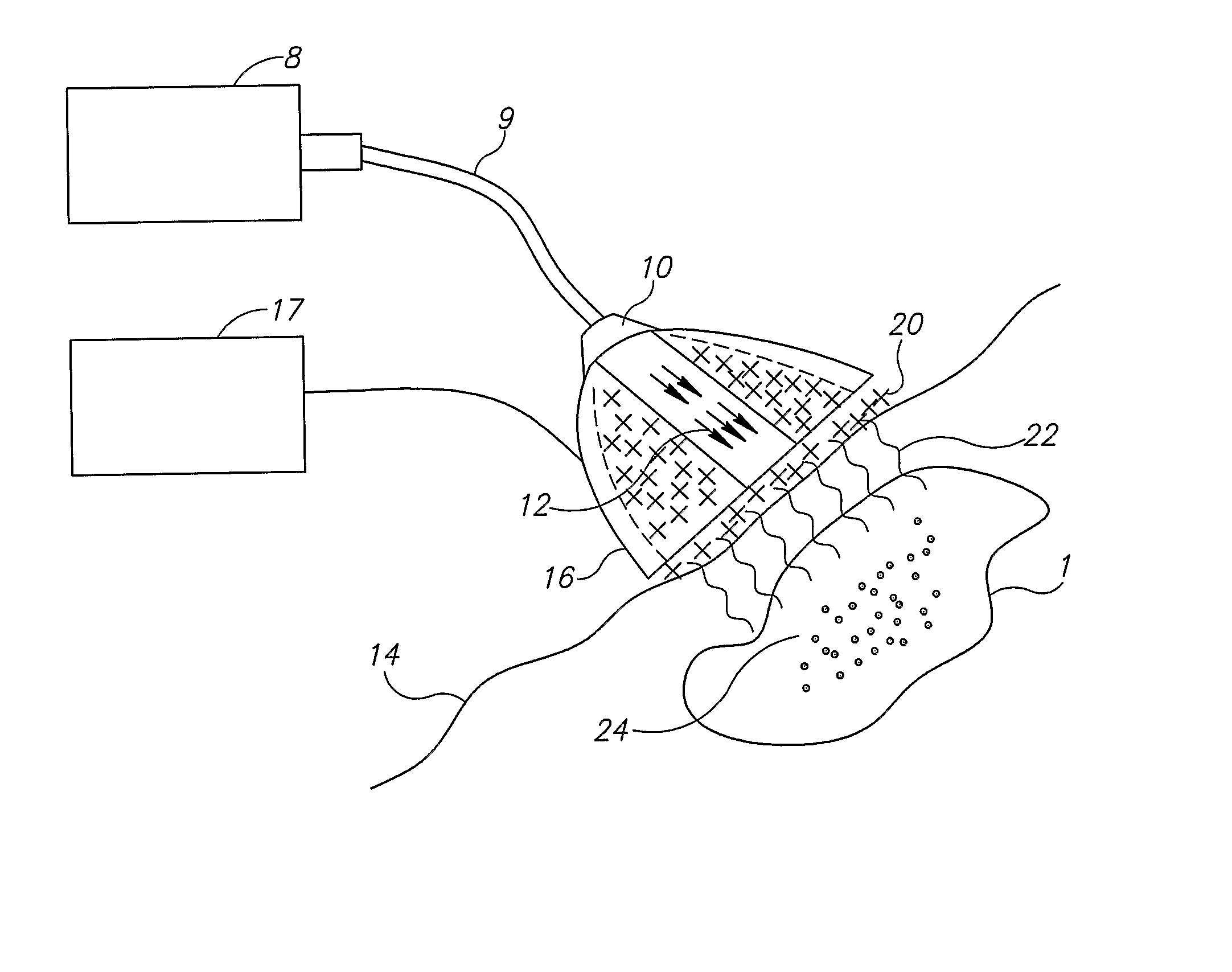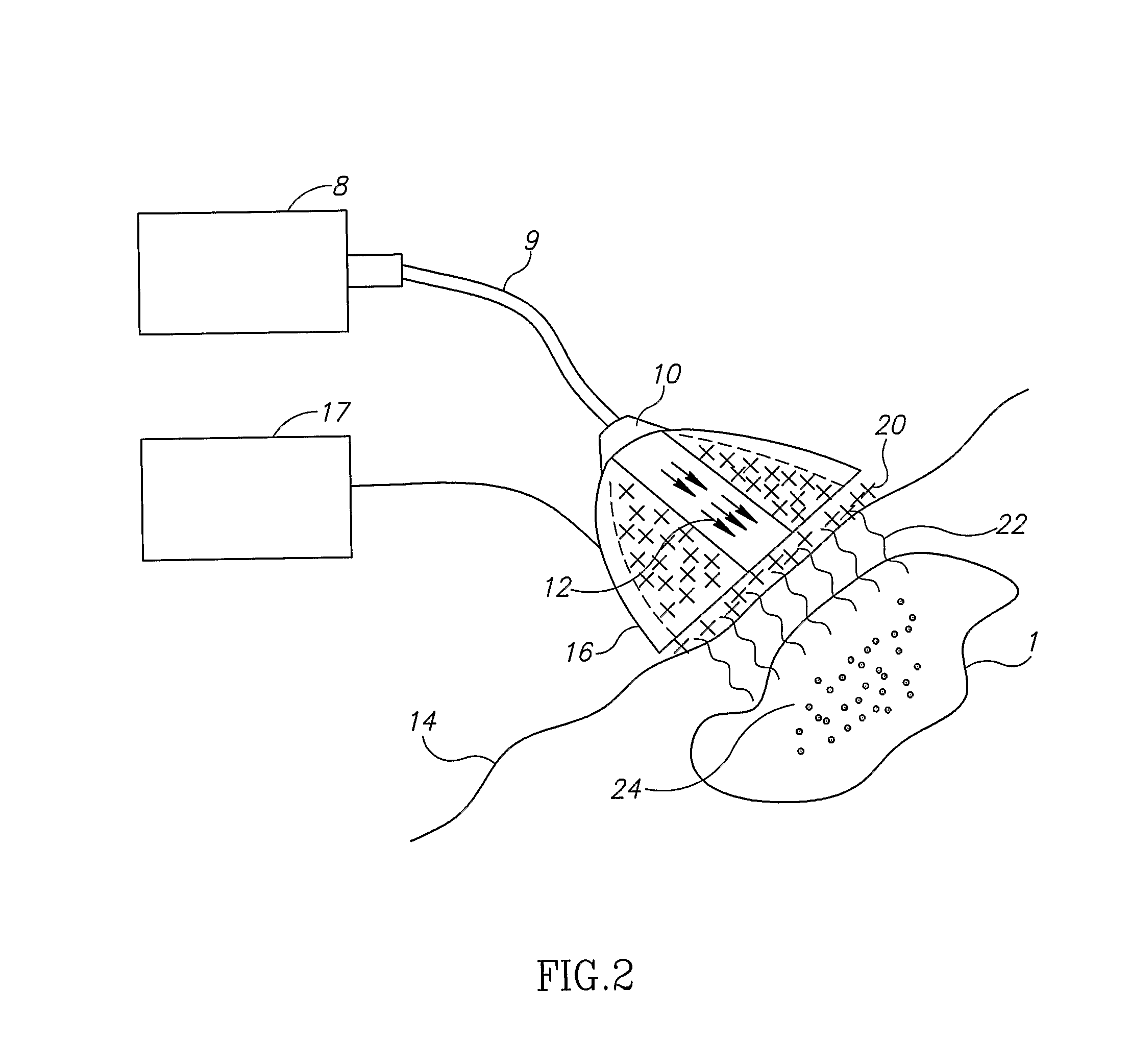Nanoparticle Mediated Ultrasound Therapy and Diagnostic Imaging
a nanoparticle and ultrasound technology, applied in the field of nanoparticle mediated ultrasound therapy and diagnostic imaging, can solve the problems of low power density ultrasound not being useful for treating cells or tissues, damage to adjacent healthy cells or tissues, combined use of ultrasound and targeted contrast agents has a basic limitation, etc., to achieve precise imaging of diseased tissue borders, enhance the effect of hyperthermia, and localization
- Summary
- Abstract
- Description
- Claims
- Application Information
AI Technical Summary
Benefits of technology
Problems solved by technology
Method used
Image
Examples
Embodiment Construction
Definitions
[0085] As used herein, “energy source” encompasses any and all forms of excitation, including radiation from any or all regions of the electromagnetic spectrum, ultrasound, magnetic fields, electric fields, microwave radiation, laser radiation, etc.
[0086] As used herein, “light” means electromagnetic radiation.
[0087] As used herein, “electromagnetic radiation” is defined as radiation having an electric field and a magnetic field propagating at right angles to one another and is further limited to only the following: microwaves, infrared, visible, ultraviolet, x-rays, gamma rays, and cosmic rays. As used herein, “electromagnetic radiation” does not include radio-frequency radiation.
[0088] As used herein, “nanoparticle” is defined as a particle having a diameter of from 1 to 1000 nanometers, having any size, shape, structure or morphology exhibiting enhanced absorption of electromagnetic radiation in a relatively narrow spectral band, between 300 nm and 2000 nm, as a si...
PUM
 Login to View More
Login to View More Abstract
Description
Claims
Application Information
 Login to View More
Login to View More - R&D
- Intellectual Property
- Life Sciences
- Materials
- Tech Scout
- Unparalleled Data Quality
- Higher Quality Content
- 60% Fewer Hallucinations
Browse by: Latest US Patents, China's latest patents, Technical Efficacy Thesaurus, Application Domain, Technology Topic, Popular Technical Reports.
© 2025 PatSnap. All rights reserved.Legal|Privacy policy|Modern Slavery Act Transparency Statement|Sitemap|About US| Contact US: help@patsnap.com



